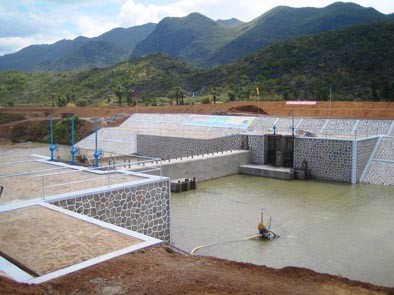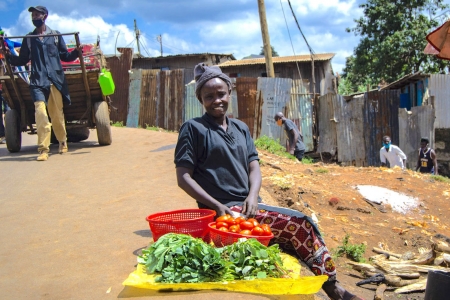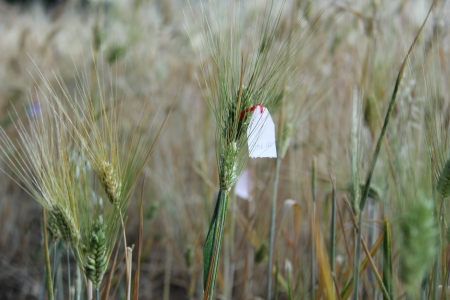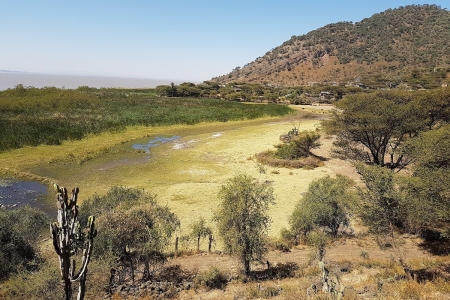While floods are often framed as harmful and destructive, they also have many positive impacts and provide benefits for people and nature.
In sub-Saharan Africa, an estimated 25 million hectares are already being irrigated with floods, in various ways. With a mean plot size of 0.5 hectare, it can be assumed that about 50 million people directly practice and benefit from flood-based farming.
Flood-based farming is also common in Asia, where it yields greater productivity and supports larger populations than what is reported for Africa. This discrepancy is primarily due to better management and more diverse uses of floods in Asia.
But, the use and management of floods can be improved, by implementing relatively low-investment and low-skill interventions, to boost agricultural productivity in sub-Saharan Africa.
Types of flood-based farming systems
Flood-based farming is possible in areas that regularly receive floods, which can form the basis for productive farming systems, such as crop cultivation, livestock grazing or fishing grounds.
Four main types of flood-based farming systems have been identified:
- Floodplain agriculture, which is the most common type of flood-based farming in sub-Saharan Africa, and where either receding or rising floodwaters provide water for crop cultivation.
- Spate irrigation, in which floodwater from mountain catchments is diverted from normally dry riverbeds and spread over large areas for irrigation, improvement of grazing areas, filling of drinking water ponds and groundwater recharge.
- Inundation canals, which are situated next to rivers or floodplains and are fed by water when rivers rise. The canals are then used to divert the water to nearby farmland.
- Depression agriculture, in which shallow depressions are filled when the groundwater level rises on a seasonal basis. They can provide enough moisture to support grazing in the dry season and crops grown without irrigation.
A snapshot of first floods, which can be used in spate irrigation, in a seasonal river in Dayu Kebele, Raya Alamata Woreda in Ethiopia’s northern Tigray province:
Six ways to increase productivity of flood-based farming systems
Improving the following aspects has potential to drastically increase the productivity of these flood-based farming systems:
1) Water distribution
Floods may vary in intensity and duration, from a few hours to a period of months, and may also at times be forceful and unpredictable. Improving water distribution, by putting in place water control structures, can allow better control of water and reduce erosion, water logging and other risks.
Dividing the floodwater into smaller portions, and avoiding steep slopes where water can pick up speed, can help safely steer water. Other relevant flow diversion structures can be put place, including drop structures (to transition between levels), flood bed stabilizers (to prevent uncontrolled runoff) and water-spreading weirs (to reduce erosion).
2) Field water management
Being able to manage the rise and drainage of floodwater within a field is also essential to be able to use the water productively. Several mechanisms can help in this matter: Dikes and soil bunds can help protect fields from unexpected floods and they can also allow farmers to drain or retain water as needed; drainage ditches can be used to channel away excess floodwaters; and reuse agreements can enable farmers to take turns using water from the same source.
3) Groundwater use
In most area where flood-based farming can be practiced, groundwater is will be shallow. This means that potential exists to access and use groundwater to extend the cropping season.
Several approaches can be considered, including accessing groundwater through hand-drilled tube wells, which can be established for low costs and using only local labor. Other groundwater-lifting technologies include rope pumps, treadle pumps, motor pumps and solar-powered pumps. Most importantly in assessing and mapping groundwater resources to avoid overexploitation.
4) Agronomic practices
Introducing improved crop varieties and changing agricultural practices can also help realize potential production gains. Some crop varieties are better suited for flood-based farming systems, such as for example very fast growing floating rice varieties, which are grown in areas as varied as Mali and Myanmar.
5) Multi-functional use
The productivity of flood-based farming systems can also be boosted by considering the multiple ways that floodplains provide benefits, such as through fishery, flood pastures, fuel wood collection and water supply. For example, fishponds and aquaculture can supply local communities with protein, while requiring fewer inputs than other agricultural practices.
6) Internal governance
Flood-based farming systems are underappreciated and poorly understood by governments, donors and development agencies. To realize the full potential, governance must be improved, including by familiarizing policy makers, extension workers, academics and other water professionals with the potential for and benefits of floods-based farming.
Learn more
This research has contributed to The Spate Irrigation Network Foundation, which aims to strengthen the networks of farmers and other stakeholders in flood based spate irrigation areas and to support and help implement programs on exchanging good economic and social practices and settling issues of water distribution and conflict mitigation. www.spate-irrigation.org.











